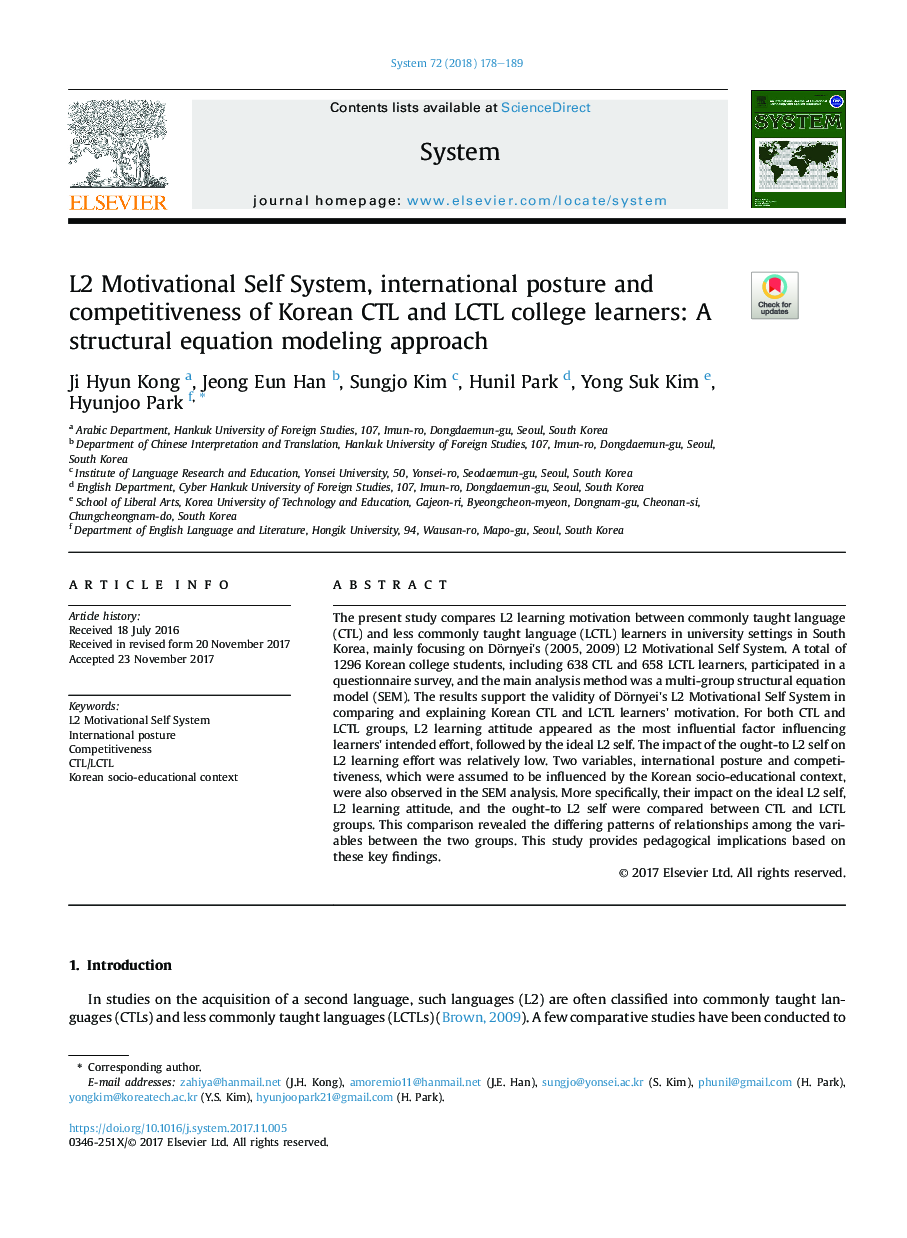| Article ID | Journal | Published Year | Pages | File Type |
|---|---|---|---|---|
| 6849422 | System | 2018 | 12 Pages |
Abstract
The present study compares L2 learning motivation between commonly taught language (CTL) and less commonly taught language (LCTL) learners in university settings in South Korea, mainly focusing on Dörnyei's (2005, 2009) L2 Motivational Self System. A total of 1296 Korean college students, including 638 CTL and 658 LCTL learners, participated in a questionnaire survey, and the main analysis method was a multi-group structural equation model (SEM). The results support the validity of Dörnyei's L2 Motivational Self System in comparing and explaining Korean CTL and LCTL learners' motivation. For both CTL and LCTL groups, L2 learning attitude appeared as the most influential factor influencing learners' intended effort, followed by the ideal L2 self. The impact of the ought-to L2 self on L2 learning effort was relatively low. Two variables, international posture and competitiveness, which were assumed to be influenced by the Korean socio-educational context, were also observed in the SEM analysis. More specifically, their impact on the ideal L2 self, L2 learning attitude, and the ought-to L2 self were compared between CTL and LCTL groups. This comparison revealed the differing patterns of relationships among the variables between the two groups. This study provides pedagogical implications based on these key findings.
Related Topics
Social Sciences and Humanities
Arts and Humanities
Language and Linguistics
Authors
Ji Hyun Kong, Jeong Eun Han, Sungjo Kim, Hunil Park, Yong Suk Kim, Hyunjoo Park,
